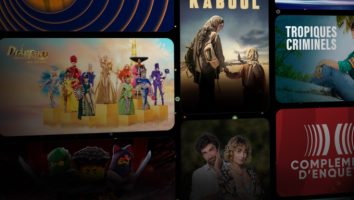To help us keep up-to-date with what’s happening with kids, we’ve asked Kid Think Inc., a youth marketing consulting group, to investigate and report back to us on a wide range of issues in kids’ lives. Since today’s kids spend so much time on-line, Kid Think will be talking to kids via Live Wire, Today’s Families Online, a proprietary panel of 600 on-line families across the United States.
Both Kid Think and Live Wire are divisions of Griffin Bacal, a New York communications agency specializing in the youth and family markets. If you have any questions or have subjects you’d like to see Kid Think cover, call Bob Horne at 212-337-6410 (live wire@gbinc.com).
This month, Live Wire went on-line to talk with kids aged five to 12 and their parents about the newest Disney feature film, The Hunchback of Notre Dame.
What we found:
Parents generally feel comfortable taking their kids to see a Disney movie because Disney is famous (to some, infamous) for oversanitizing touchy subjects like death and sex. But, there was some surprise when word got out that Disney was presenting a version of Victor Hugo’s gothic tragedy The Hunchback of Notre Dame. Most parents trusted Disney and took their kids to see the film without thinking twice . . . that is, until the first scene.
One parent now plans to preview Disney movies to make sure they are appropriate for her kids. Perhaps Disney made a mistake with this movie or perhaps parents are projecting their own uneasy feelings about the film’s mature content onto their kids and are falling into the ‘adult-think’ trap.
As for kids, the majority ruling was that the movie wasn’t scary, primarily because all the children understood that it was ‘only a cartoon.’
The crux of the movie for kids was the outcast issue, which each child related to more readily than the issues of sex, God and death presented in the film. Those were secondary, if understood at all by the kids. Death and sex aren’t generally in keeping with their frame of reference. Kids are dealing with ‘fitting in.’ They are more concerned with Quasimodo’s self-esteem problems, not with another character’s warped sexual desires.
As for the questionable sexual relationship in the movie between Frollo (‘the bad guy’) and Esmeralda the gypsy, the center of his desire and hate, our young movie critics went out for popcorn on that scene. Few caught on to the nuances of a love/hate relationship and all that it implies. It was clear that the kids simply didn’t understand and more importantly, they weren’t that interested in an explanation. Half claimed that Frollo loved Esmeralda and the other half stated that he hated her. Only one child hit upon the duality of Frollo’s emotions.
In a sense, parents may be creating a trap for themselves when they view products and services as damaging to their children because they are filtering them through their own experience. The kids we spoke to through Live Wire didn’t have much of an impression of the scenes that parents found controversial.
For kids, The Hunchback of Notre Dame is first and foremost a cartoon that has a message of love and understanding.
What kids said:
About love: ‘Quasimodo loves Esmeralda because she was kind to him. Ph’ebus loves Esmeralda because she is beautiful and brave and smart. Frollo loves Esmeralda because he wants to have sex with her, and because she is pretty and dances really good.’ (Amy, 11)
‘[Frollo] only wants [Esmeralda] because of her good looks, not because he loves her.’ (Josh, 12)
About death: When asked about the murder of Quasimodo’s mother in the first scene, they were very matter of fact and blasé. ‘[Quasi and Frollo] meet because Quasi’s mother runs away from [Frollo] and Frollo steals the baby thinking it is riches, and the priest makes him raise the baby like it is his own. It’s sad because the mother died and Frollo was mean.’ (Melissa, 10)
About Quasimodo: ‘Sometimes people are afraid of people who are different. Frollo made Quasi feel bad about himself.’ (Elizabeth, 6)
‘Quasi is an outcast because he has physical problems. I think that Frollo is to blame, because he tried to keep Quasi in the bell tower and tell him that he wouldn’t be liked, and that made Quasi feel bad about himself. If Quasi would have had good self-esteem, I think that even though he looked different, he would still fit in.’ (Lindsey, 12)
The moral of the story: When asked what they learned from the movie, one child summed it up nicely: ‘You should be nice to people even if they look funny.’ (Kara, 5)
What parents said:
‘I think Disney is in for a lot of grief over this movie. I think it was misrated. It should have been PG at least due to adult content. The demons were unnecessary and in poor taste, and the sexual innuendo had no place in a child’s show. What was the point of it, really? They could have, and should have, softened all of this, as well as the murder scene. The implications of dropping the child down the well were uncalled for and in poor taste, too.’
‘Enjoyed the moral lessons taught. Very subtle inferences to sexuality and attractiveness. My six-year-old didn’t quite get it, which is just fine!’
One mother of two expressed it well: ‘Parents shouldn’t fret over the presumed problematic issues in the movie because the child probably didn’t get them . . . and if they did, then perhaps it is an opportunity to discuss these issues and control them.’





















